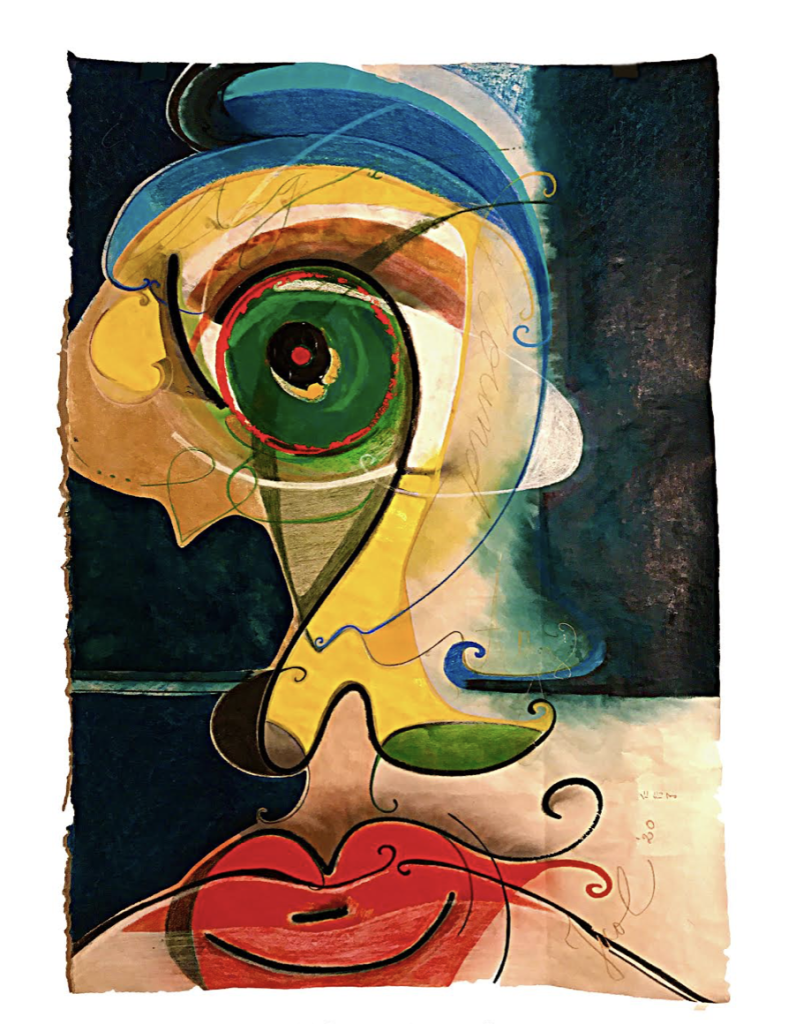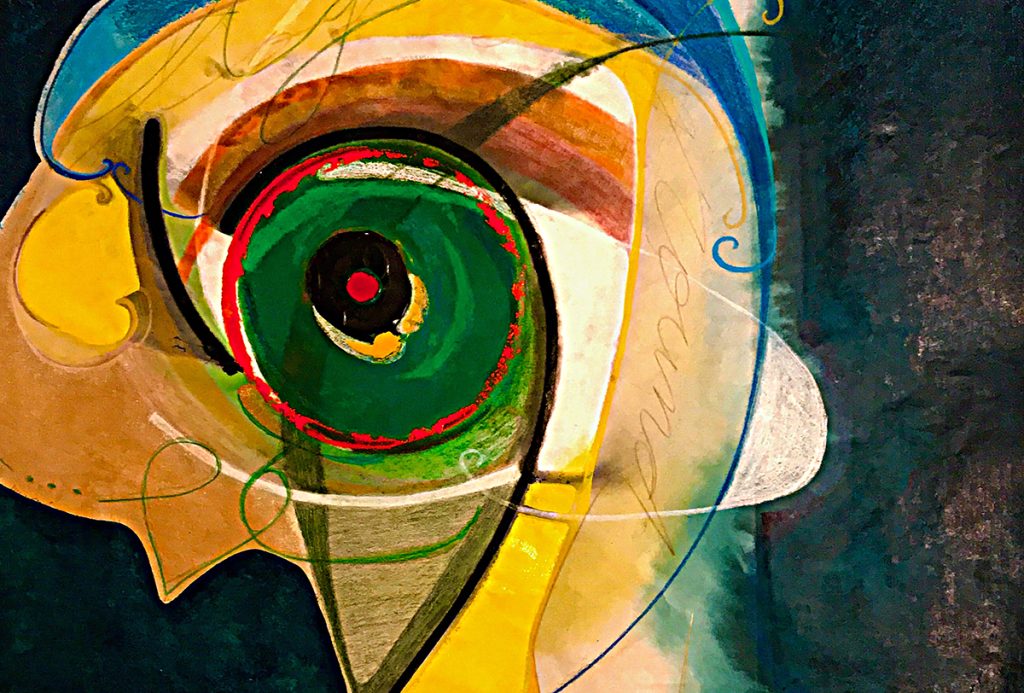Alexandra Jicol is an artist who resists easy categorization. She works with a sharp intensity, driven by her need to translate the human condition into visual language. Her art is not an escape but a confrontation—an invitation to face the pulse of existence itself. Throughout her career, Jicol has pursued what she calls pictorial independence, a refusal to be boxed in by trend or style. She treats color and form as physical companions, alive and tactile, each stroke tied to her own carnal relationship with the canvas. Her work pushes beyond appearances, attempting to trace the edges of states of mind, moods, and fleeting expressions. At its center, her practice returns again and again to one theme: life itself. She sees painting as a dialogue with the essence of being, capturing the rawness of emotion and turning it into something tangible, layered, and resonant.

Losing Ground: A Work of Tension and Vitality
One of Jicol’s most arresting pieces is Losing Ground (2020), an acrylic painting on Japanese Washi handmade paper. At 38 by 26 inches, the work has an immediate presence. The choice of Washi paper brings fragility and strength into play at once. It is thin and organic, yet durable—a fitting surface for a painting that is itself a study in resilience and vulnerability.
Artificial light, under which the piece was photographed, makes the colors shift depending on perspective. This changeability reflects the spirit of the work. Nothing here is fixed. Everything is in motion: emotions, moods, even the subject’s identity.
The composition is dominated by a large, exaggerated eye, ringed in concentric shades of green, red, and black. From that point of focus, lines arc downward, curving and twisting toward the mouth. These lines do not merely separate features; they carry the energy of movement, mapping a shifting state of mind. They ripple across the painted surface like signals of change—waves of thought, emotion, or even memory.
Jicol’s own description of the work suggests that these flowing lines mark transitions. They are not static borders but directional currents, leading the viewer from eye to mouth, from perception to expression. They are also indicators of something deeper: changes in personality, fragments of soul, glimpses of an inner world surfacing through color and form.
Capturing Expressions of Life
The painting does not represent a single individual. Instead, it channels the idea of life expressed through form. The subject could be a person, but equally, it could be an animal, a place, a season. Jicol resists limiting her art to portraiture in the traditional sense. Instead, Losing Ground works as a mirror of vitality itself, a reminder of what it feels like to be alive.
Her treatment of the human face is both abstract and deeply personal. The oversized eye suggests perception, but also vulnerability—the openness of being seen and the act of seeing. The mouth, rendered in bold red curves, hints at desire, voice, and expression. Between them, the yellow forms and flowing lines act as bridges, connecting thought to feeling, perception to articulation.
What emerges is not just a portrait but a study in awareness. Jicol highlights those moments where life pulses at its strongest, when emotions surface in ways that words cannot capture. The painting is both chaotic and ordered, playful and serious. It asks the viewer to dig beneath surface appearances and search for the essence carried within each brushstroke.
Life Under a New Light
What makes Losing Ground resonate is its sense of honesty. It does not offer a polished, final image but instead reveals the instability and beauty of being in flux. The viewer is reminded that moods shift, states of mind overlap, and identities are never static. In Jicol’s world, art is not about capturing a perfect likeness. It is about tracing the vibrations of existence.
Her work reminds us that living with awareness is itself a gift. When we pay attention—to others, to places, to seasons—we honor the essence of life. Through her art, Jicol highlights this truth, placing everyday vitality under a new light. The subject matter may change, but her aim is constant: to show us that we are alive, that our lives are worth seeing, and that expression—whether human or otherwise—is always waiting to be uncovered.
Conclusion
Losing Ground is more than a painting; it is an experience of looking deeper. It demonstrates Jicol’s enduring fascination with the human condition, her pursuit of independence in art, and her carnal relationship with color and line. In its bold eye, sweeping arcs, and red mouth, the piece whispers that being alive is both fragile and profound. It carries us into awareness, asking us to see ourselves and the world with greater clarity.
Alexandra Jicol’s work, in this painting and beyond, insists that life is not something to be observed from a distance—it is to be lived, felt, and expressed in every shade and every line.

